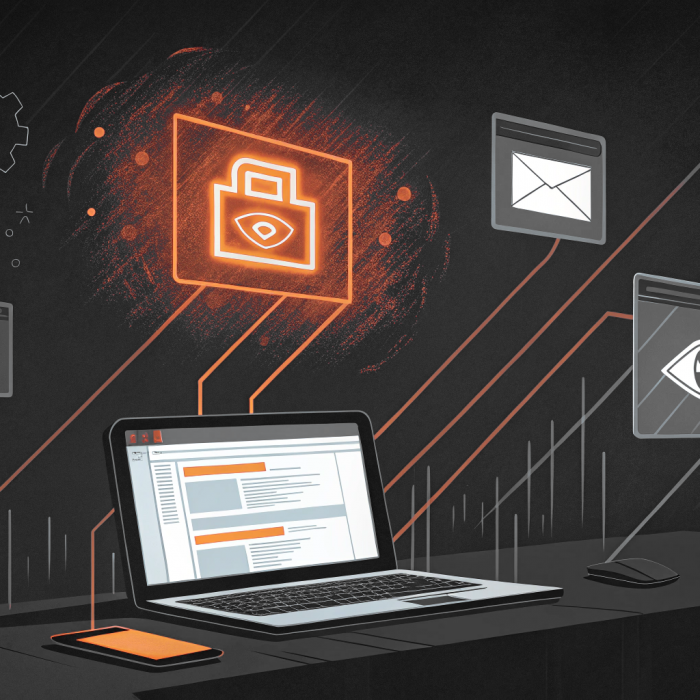McLaren Health Care recently notified 743,131 patients that their personal information was compromised in a ransomware attack that occurred in July 2024. For a healthcare system that already suffered a massive breach just one year earlier, this latest incident raises serious questions about the effectiveness of post-breach security improvements.
The Attack Timeline: A Slow-Motion Disaster
The attackers maintained access to McLaren’s and Karmanos Cancer Institute’s systems between July 17 and August 3, 2024, but the breach was not discovered until August 5. What is particularly concerning is how long the forensic investigation took: McLaren only completed determining who was impacted on May 5, 2025 (nearly ten months after discovering the attack).
During those crucial weeks in 2024, the INC ransomware group had access to McLaren’s network. Patient databases were reportedly impacted, and people were asked to bring information about appointments and medication when visiting McLaren hospitals. The attack caused significant operational disruption, with some appointments rescheduled and emergency departments implementing contingency protocols.
The compromised data included names, Social Security numbers, driver’s license numbers, medical information, and health insurance details according to breach notification documents. This comprehensive personal data is exactly what makes healthcare organizations attractive targets for cybercriminals.

A Pattern of Vulnerability
What makes this incident particularly troubling is that it represents McLaren’s second major ransomware attack in less than two years. In November 2023, the organization disclosed another data breach that occurred between late July and August 2023, which exposed the sensitive personal information of 2.2 million people. That previous attack was attributed to the ALPHV/BlackCat ransomware group.
This rapid reoccurrence suggests that McLaren’s security improvements after the first attack were insufficient to prevent the second one. While the specific attack vectors have not been disclosed for either incident, the repeated successful breaches indicate fundamental security gaps that were not properly addressed.
The Healthcare Security Crisis
McLaren’s situation reflects a broader crisis in healthcare cybersecurity. A report from Proofpoint found that 92% of healthcare organizations had experienced at least one cyberattack in the past year, with losses ranging from $10,000 to more than $25 million. Healthcare has become a prime target because these organizations often struggle with outdated systems, complex networks, and the operational pressure to prioritize patient care over security hardening.
Ransomware attacks against the U.S. healthcare sector increased 128% from 2022 to 2023. This surge in attacks has been attributed to several factors, including the critical nature of healthcare services that can pressure organizations to pay ransoms quickly, and the valuable personal and medical data that healthcare systems store.
The problem extends beyond individual incidents. When major healthcare systems suffer repeated breaches, it signals to other threat actors that healthcare remains a vulnerable target. This can encourage more attacks across the sector, creating a cycle of victimization.
Beyond the Numbers
While headlines focus on the 743,000 affected patients, the real impact of McLaren’s repeated breaches extends much deeper. Each incident erodes patient trust, creates regulatory scrutiny, and forces the organization to dedicate resources to breach response rather than patient care improvements.
The operational disruption during the attack was significant. When patient databases are compromised and systems are down, healthcare providers cannot access critical patient information, potentially affecting care quality and safety. Emergency departments had to implement manual processes, and some patients had their appointments rescheduled.
Several law firms have already announced investigations into the company and are appealing for individuals to join their class action against McLaren, adding legal pressure to the operational and reputational challenges.
Industry-Wide Implications
The McLaren incidents are part of a disturbing trend affecting the healthcare sector. High-profile ransomware attacks this year have also targeted nonprofit health system Ascension and UnitedHealth-owned technology firm Change Healthcare. The ransom paid after the attack on Change Healthcare may have encouraged even more criminals to target the sector.
Hospitals are particularly vulnerable targets for attackers because they may be motivated to accede to demands if it means bringing their systems back online quickly. IT outages can have serious implications for healthcare delivery, delaying care, increasing patient safety concerns, and adding to nearby hospitals’ caseloads.

Learning from McLaren’s Experience
McLaren’s situation offers several important lessons for other healthcare organizations:
One successful attack does not provide immunity: Surviving a ransomware attack and implementing security improvements does not provide protection from future attacks. Continuous security improvement and vigilance are necessary.
Forensic investigations require significant time: McLaren took nearly ten months to complete its investigation and notify affected individuals. While thorough investigation is important, organizations need to balance accuracy with timely notification requirements.
Healthcare faces unique challenges: The 24/7 operational requirements, complex interconnected systems, and life-critical nature of healthcare services create security challenges that require specialized approaches.
Repeat attacks indicate systemic issues: When an organization suffers multiple successful breaches in a short timeframe, it suggests that fundamental security architecture needs to be reassessed rather than simply patched.
The Road to Recovery
For McLaren, the path forward involves rebuilding patient trust while implementing more comprehensive security measures. The organization has stated that it is working to implement additional safeguards and employee training, though specific details about these improvements have not been disclosed.
Effective defense combines multiple layers of security, including network segmentation, endpoint protection, employee training, incident response planning, and regular security assessments. Healthcare organizations must also balance security requirements with operational needs, ensuring that security measures do not impede critical patient care activities.
Healthcare organizations cannot eliminate all cybersecurity risk, but they can significantly reduce it by addressing fundamental security gaps and implementing defense-in-depth strategies. For an industry that holds some of our most sensitive personal information, that effort represents not just good business practice, but a responsibility to the patients who trust them with their data and their lives.







